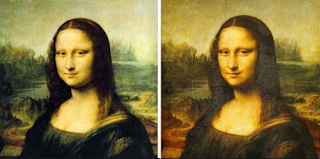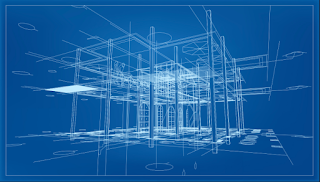Week 3- Robotics + Art
Davis Douglas starts out his journal by stating, “There is no clear conceptual distinction now between original and reproduction in virtually any medium based in film, electronics, or telecommunications.” Movies are now being remade, and are not really original. Paintings are now becoming less original because there is only one copy, and that one copy is usually found in museums. Copy’s of the paintings are sold around the world for cheap, and make the actual painting less valuable. Walter Benjamin brings the issue of technology into this argument saying that technology doesn't have a positive impact on art due to mass production. Technology has helped art a tad because many people have been able to see art pieces through the internet without having to travel across the world to see them, but they are also able to copy it for free. Art has lost a lot of money due to this, and has been seen less and less original. Victoria Vesna agrees with both Douglas and Benjamin in her second part of lecture by saying “mechanical reproduction emancipates art from its ritual.” Being an artist used to be a highly respected profession, because when an art piece was created, it was original, and there was only one. Now art is seen more as a hobby, and many artist are not only allowed to be an artist, they might have to add a few more jobs on the side.
(Courtesy of: https://www.nextnature.net/2008/02/fake-for-real-the-most-famous-reproduction/)
In Victoria Vesna’s first lecture she brings up the point of robots in assembly lines. Assembly lines were created in the early 1900’s to increase production. The whole point of assembly. lines was to increase production in the fastest way possible. about 100 years later scientist discovered that they could increase production even more by replacing humans with robots. While this increase production, thousands of people lost their jobs due to robot replacement, and no longer had the income to purchase what these robots were making. The was an increase in supply and a decrease in demand, and the cost of robots was also astronomical.
(Courtesy of: https://thenextweb.com/gadgets/2016/03/03/amazons-tiny-echo-puck-speaker-puts-alexa-on-any-stereo/#.tnw_TpzSlSiZ)
While robots have increased the speed at which things are done, it is almost getting to the point where we rely on them too much. Professor Machiko Kusahara touches on this point in her lecture by saying robots slowly started replacing people as early as the late 1700’s early 1800’s during the industrial revolution. She thinks humans have been being replaced by robots way before the assembly line, and the trend has only bee increasing over the last 250 years. We see more and more of this in our society today. Disney Channel came out with a movie about 20 years ago named “Smart House”. In this movie the house is controlled by a robot, and ends up taking over the house and trapping the family that lives inside of it. Today we see a robot created by Amazon named Alexa, that can control your house. Alexa can start your coffee in the morning, turn on and off your lights, and lock your doors. This is just the first generation of Alexa, soon this robot will become too smart and be able to control much more than just the appliances in a household.
Benjamin, Walter, and J. A. Underwood. The Work of Art in the Age of Mechanical Reproduction. London: Penguin, 2008. Print.
Douglas, Davis, The Work of Art in the Age of Digital Reproduction, 80 Wooster Street #4, New York, NY 10012-4347, U.S.A.
Professor Machiko Kusahara on Japanese Robotics. Dir. Victoria Vesna. Perf. Machiko Kusahara. UC Online Program, 14 Apr. 2012. Web. <https://www.youtube.com/watch?v=xQZ_sy-mdEU>.
Robotics Part 1. Dir. Victoria Vesna. Perf. Victoria Vesna. UC Online Program, 15 Apr. 2012. Web. <https://www.youtube.com/watch?v=cRw9_v6w0ew>.
Robotics Part 2. Dir. Victoria Vesna. Perf. Victoria Vesna. UC Online Program, 15 Apr. 2012. Web. <https://www.youtube.com/watch?v=oAZ8bo9T_Pk>.





Indeed, advancement of technology has allowed the art to be more accessible to many. Nevertheless, I believe that replicas of an artwork are not artworks because they are neither creative nor original. In fact, mass production of an artwork is very disrespectful to the artist of the original work. It is even threatening because it jeopardizes the artist's position. Yes, this is very analogous to how the introduction of assembly line was very beneficial by a providing efficient and productive method yet how it was also very detrimental by replacing human labor.
ReplyDeleteYour writing was insightful and demonstrated a clear understanding of the subject. I found your comparison between Alexa and Smart House particularly funny, yet sobering. The idea that we could progress to those circumstances so quickly is fascinating and provokes a lot of curiosity.
ReplyDelete